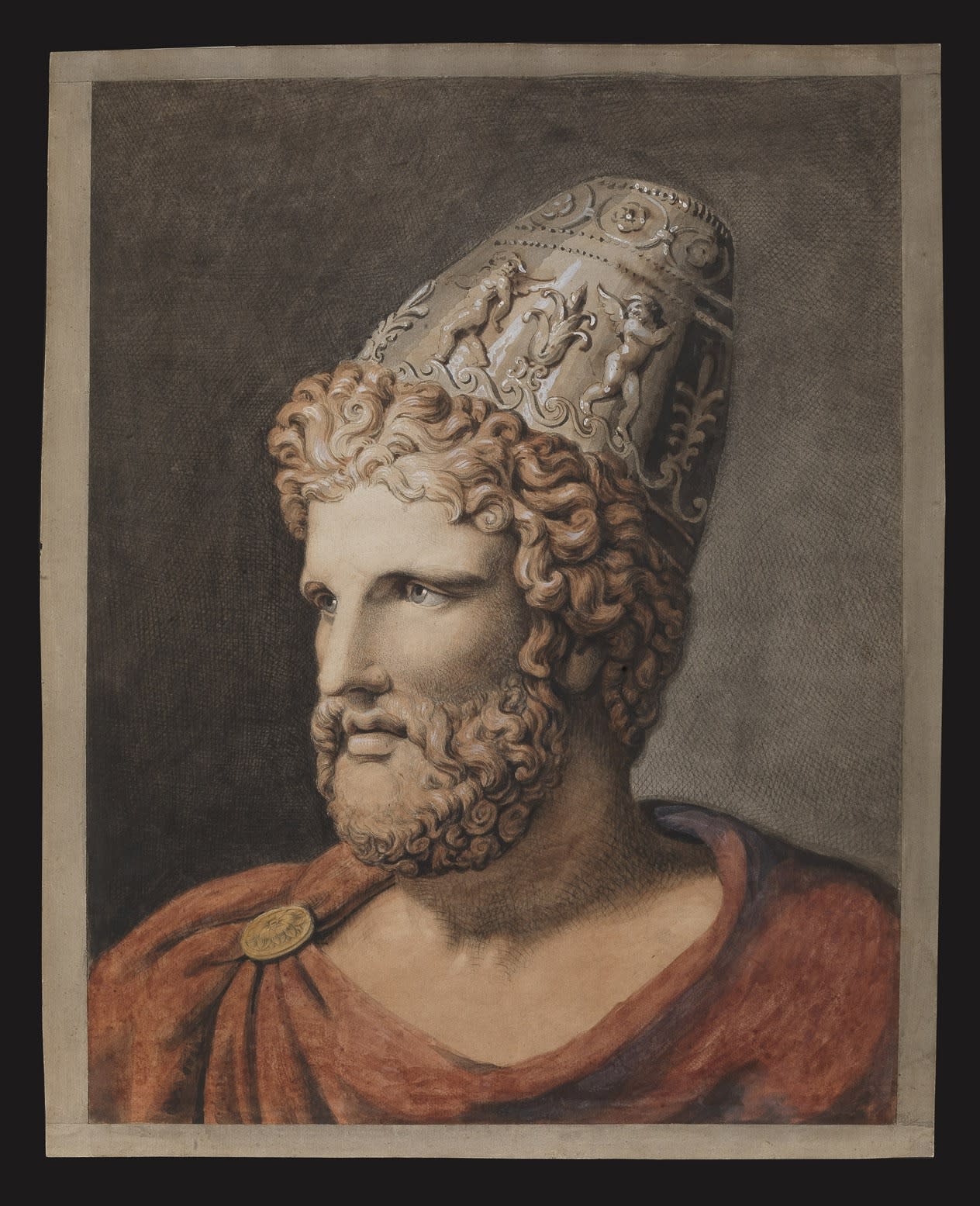Johann Heinrich Wilhelm TISCHBEIN 1751-1829
Provenance
Private collection, Italy
This work has been studied and authenticated by Professor Hermann Mildenberger.
The Odysseus portrait, known via a lithography contained in Tischbein's book titled Homer as drawn by the Ancients,often recurs in the artist's paintings, even beyond the series devoted to Homer. On an aesthetic level, the chalk's hatched line recalls the lithography of the “Homer” series; this sheet is not, however, a sketch but rather a drawing that possesses the aesthetic characteristics of a lithography with its own chromatic scheme.
Many compositions from the “Homer” series were used by Tischbein's pupils as tools for their training: for example, the “Odysseus” copied by the Nazarene Friedrich Overbeck[i].
In the Klassik Stiftung in Weimar there is a series of eight “Heads of Homeric Heroes” which Goethe saw in 1801 in the house of Heyne, the scholar of the first part of the “Homer” cycle. In this collection of colour exemplars there was also a version of the head of Odysseus which was separated out in the nineteenth century. The format of the removed copy is quite different from this version[ii].
Again in Weimar, in the legacy of Johann Heinrich Meyer, there is a volume with Tischbein's drawings which include another version of “Odysseus”.
[i] See Hermann Mildenberger, J. H. W. Tischbein - Philipp Otto Runge - Friederich Overbeck Aspekte des künstlerischen Austauschs, in Jahrbuch des Schleswig - Holsteinischen Landesmuseums Schloß Gottorf, N.F. Vol. I, 1986 - 1987, Neumünster 1988, pp. 71 - 73
[ii] See Hermann Mildenberger, Johann Heinrich Wilhelm Tischbein. Aquarelle, Gouachen und Zeichnungen. Klassik Stiftung Weimar. Patrimonia 274, Weimar/Berlin 2006, pp. 36 - 37).
JOIN OUR MAILING LIST
Subscribe to our mailing list in order to receive news on new acquisitions, exhibitions, special previews and more!
* denotes required fields
We will process the personal data you have supplied to communicate with you in accordance with our Privacy Policy. You can unsubscribe or change your preferences at any time by clicking the link in our emails.
